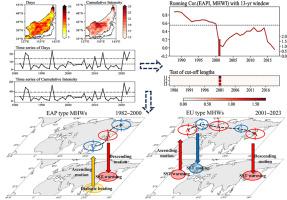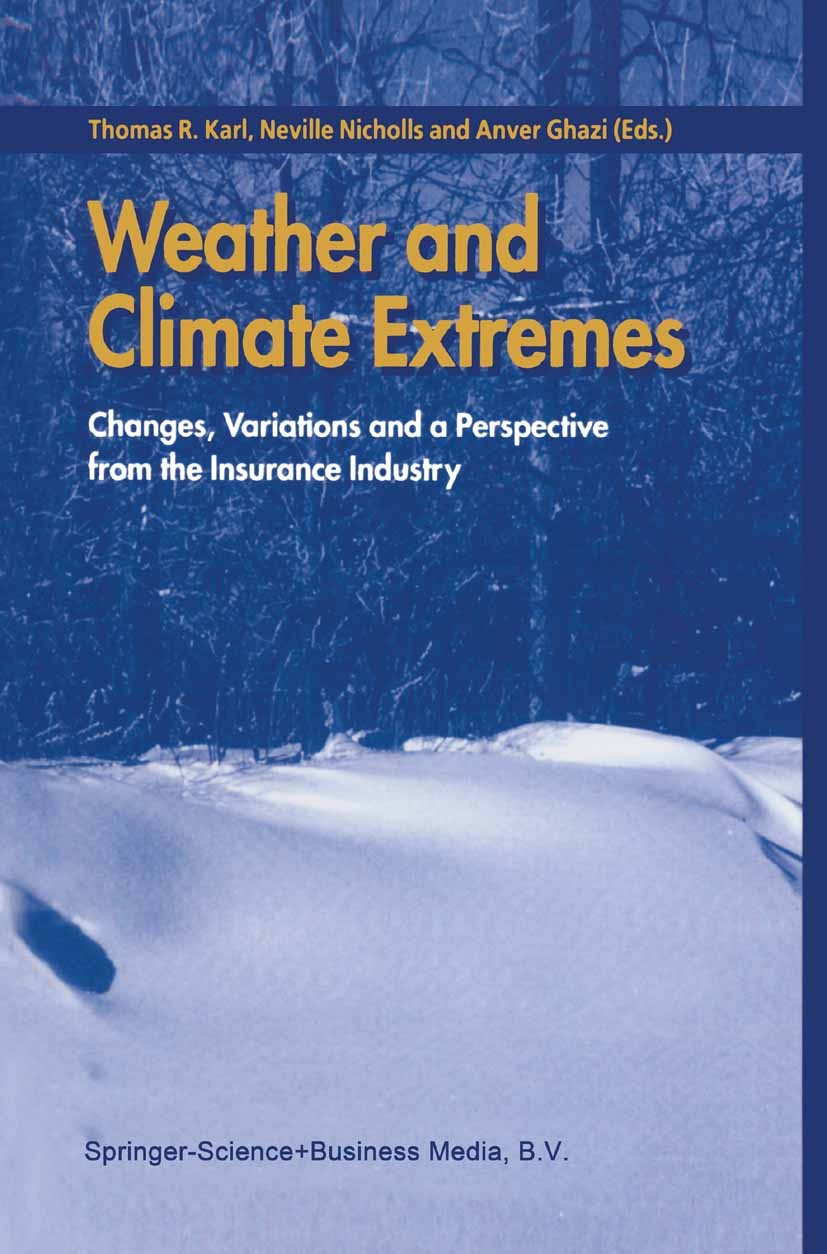Influence of the East Asia‒Pacific and Eurasian teleconnection on the summer marine heatwaves in the Japan/East Sea
IF 6.9
1区 地球科学
Q1 METEOROLOGY & ATMOSPHERIC SCIENCES
引用次数: 0
Abstract
Marine heatwaves (MHWs) are an escalating global issue, posing significant threats to marine ecosystems and the fisheries economy worldwide, including in the Japan/East Sea (JES). However, the influence of atmospheric circulation modes on the occurrence of MHWs in this relatively enclosed sea area remains unclear. To address this issue, this study utilizes 1982–2023 high-resolution daily satellite sea surface temperature (SST) data and atmospheric reanalysis products to investigate the relationship between atmospheric circulation modes and MHWs in the JES. The results show that during 1982–2023, the JES experienced severe summer MHWs, primarily driven by intense shortwave radiation linked to atmospheric activities. The East Asia-Pacific (EAP) pattern was found to influence the MHWs in the JES. Notably, we identified an interdecadal change in the relationship between MHWs and EAP patterns around 2001. Before 2001, there was a strong correlation (r = 0.68, p < 0.01) between MHWs in the JES and the EAP, but this relationship weakened significantly in the following years. During the 1982–2000 period, MHWs in the JES were primarily influenced by tropical convection over the South China Sea and the Philippine region, which triggered poleward Rossby wave propagation. Furthermore, since 2001, MHWs have shown a strong correlation with the summer Eurasian (EU) teleconnection, a zonal wave train situated over Eurasia. The correlation between EU and MHWs has reached 0.6 (p < 0.01) during the period from 2001 to 2023, in contrast to a weak negative correlation observed in the preceding EAP dominated period. This EU type mode is linked to warm SST anomalies in the North Atlantic and cold SST anomalies in the north of Western Europe from April to August. The Linear Baroclinic Model (LBM) and NCAR CAM5.3 can effectively validate the conclusions of the observations.

东亚-亚太和欧亚遥相关对日本/东海夏季海洋热浪的影响
海洋热浪(MHWs)是一个不断升级的全球问题,对包括日本/东海(JES)在内的全球海洋生态系统和渔业经济构成重大威胁。然而,在这一相对封闭的海域,大气环流模式对强震发生的影响尚不清楚。为了解决这一问题,本研究利用1982-2023年高分辨率卫星海表温度(SST)日数据和大气再分析产品,研究了JES大气环流模式与强震的关系。结果表明:1982—2023年,日本副热带地区经历了强烈的夏季强震,主要由与大气活动相关的强短波辐射驱动。发现东亚-亚太(EAP)模式影响了日本副热带的强震。值得注意的是,我们确定了2001年前后MHWs和EAP模式之间关系的年代际变化。在2001年之前,有很强的相关性(r = 0.68, p <;在JES和EAP的MHWs之间存在0.01),但这种关系在随后的几年中显著减弱。1982-2000年期间,日本副热带强震主要受南海和菲律宾地区热带对流的影响,引发了Rossby波向极地的传播。此外,自2001年以来,mhw已显示出与夏季欧亚(EU)遥相关的强相关性,这是一种位于欧亚大陆上空的纬向波列。EU与MHWs的相关系数达到0.6 (p <;0.01),而在此之前的EAP主导期则呈弱负相关。这种EU型模态与4 - 8月北大西洋海温偏暖和西欧北部海温偏冷有关。线性斜压模型(LBM)和NCAR CAM5.3可以有效地验证观测结果的结论。
本文章由计算机程序翻译,如有差异,请以英文原文为准。
求助全文
约1分钟内获得全文
求助全文
来源期刊

Weather and Climate Extremes
Earth and Planetary Sciences-Atmospheric Science
CiteScore
11.00
自引率
7.50%
发文量
102
审稿时长
33 weeks
期刊介绍:
Weather and Climate Extremes
Target Audience:
Academics
Decision makers
International development agencies
Non-governmental organizations (NGOs)
Civil society
Focus Areas:
Research in weather and climate extremes
Monitoring and early warning systems
Assessment of vulnerability and impacts
Developing and implementing intervention policies
Effective risk management and adaptation practices
Engagement of local communities in adopting coping strategies
Information and communication strategies tailored to local and regional needs and circumstances
 求助内容:
求助内容: 应助结果提醒方式:
应助结果提醒方式:


